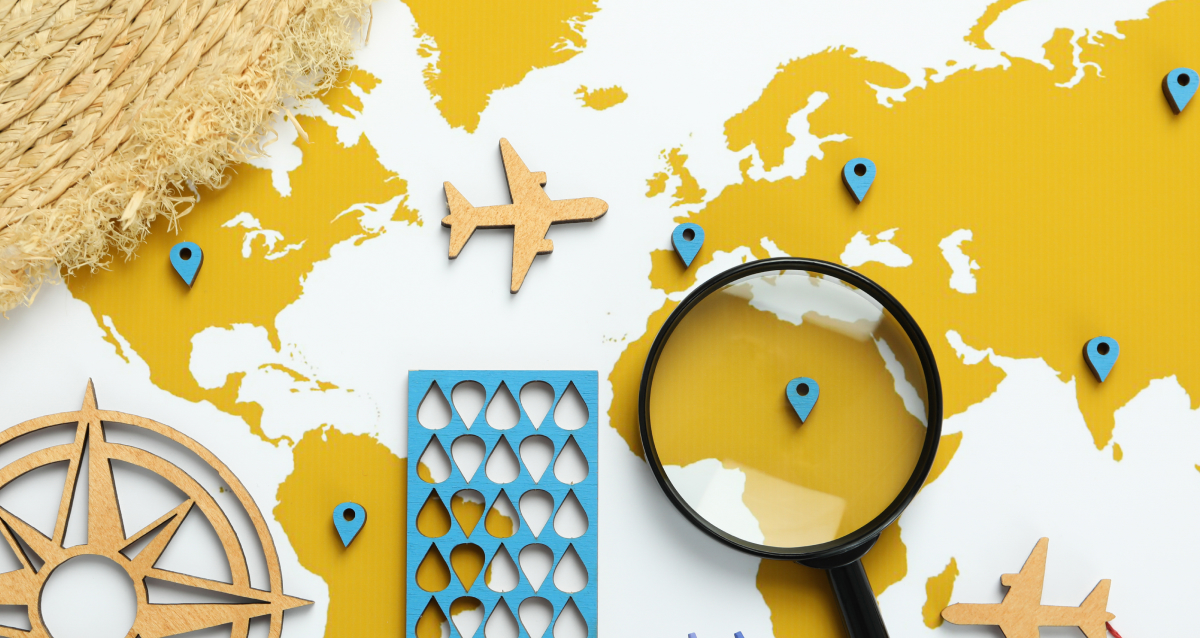
As businesses continue to expand globally, the need for international travel becomes essential. Traveling internationally for business purposes may seem very exciting for employees. However, companies have a lot to take care of. They must ensure employees are productive, safe, and have a good travel experience.
Moreover, international travel poses various risks and challenges for employees. These risks include delayed flights, loss of baggage, medical issues, civil unrest, and many more. Additionally, travel managers must arrange their visas, medical and travel insurance, and provide round-the-clock business travel support, among many others.
That is why creating a robust global travel policy is crucial. An international travel policy for employees outlines the various aspects of business travel, such as employee safety, travel experience, risks, business travel budget, and goals to be achieved.
Here is a comprehensive guide for travel managers on creating an international travel policy for employees:
Step 1: Assess the Risks
Before creating an international travel policy for employees, travel managers must assess international business travel risks. This involves identifying potential risks and threats employees may encounter while traveling abroad. Some risks and threats to consider include the following:
- Health risks: During international business travel, employees may be at risk of contracting infectious diseases or experiencing health emergencies while traveling abroad. Hence, you must conduct a risk assessment considering the health risks associated with the destination country, such as endemic diseases, availability of medical facilities, and vaccination requirements.
- Safety risks: Employees, especially female business travelers, may be at risk of physical harm or violence while traveling abroad. You must consider the safety risks of international travel, such as crime rates, terrorism threats, sexual assault, and civil unrest.
- Security risks: Business travelers may be at risk of theft, fraud, or cyberattacks while traveling abroad. The risk assessment should consider the security risks associated, such as the prevalence of pickpocketing, credit card fraud, or cyber espionage.
- Environmental risks: There are chances that your employees can be at risk of natural disasters, extreme weather conditions, or other environmental hazards while traveling abroad. Therefore, travel managers should assess the environmental risks such as hurricanes, earthquakes, and tsunamis. Although rare, being prepared is always better than leaving employees stranded.
Considering all these risks, you must thoroughly research the destination and provide employees with a risk assessment checklist before embarking on business trips.
Step 2: Determine the Scope of the Policy
Determining the scope of the global travel policy is essential in creating an effective policy. This involves identifying the employees covered by the policy and the types of travel the policy applies to. Here are some key considerations when determining the scope of the policy:
- Employee roles: The policy should identify which employees are covered by the policy. This may include all employees who travel internationally for business purposes, or it may be limited to specific job roles or departments.
- Type of travel: The policy should define the types of travel that are covered by the policy, whether for meetings, conferences, training sessions, business events, or trade shows.
- Travel destinations: The policy should specify the destinations that are covered by the policy. This may include all international destinations or be limited to specific countries or regions.
- Travel duration: The policy should define the travel duration of business travelers. This may include short-term travel, such as trips lasting a few days, as well as long-term travel, such as business meetings/projects lasting several weeks or months.
Step 3: Establish Proper Business Travel Guidelines
A critical yet often overlooked aspect of developing an international travel policy for employees is creating comprehensive business travel guidelines. These guidelines comprise a set of rules and protocols that employees must adhere to when organizing and undertaking business trips. Their primary purpose is to enable efficient travel planning, ensure the safety and comfort of travelers, and promote the responsible utilization of the company’s travel budget.
Key elements to incorporate into your global travel policy include:
- Travel Authorization: The policy should clearly state that only authorized employees are permitted to embark on international business trips. Authorization must be obtained from their manager or the designated travel coordinator.
- Travel Bookings: Employees should be instructed to arrange their travel exclusively through the organization’s approved travel agency or booking platform.
- Required Travel Documents: The policy must list essential travel documents employees need to carry, such as passports, visas, vaccination certificates, and national ID cards.
- Transportation and Accommodation: The policy should outline the approved modes of transportation and booking procedures. Similarly, it should specify the type of accommodations allowed—such as 3-star or 5-star hotels, Airbnb properties, etc.—and the steps for securing bookings.
- Emergency Procedures: Travel managers should detail protocols for employees to follow during emergencies, such as political unrest or natural disasters, to ensure their safety and well-being.
Step 4: Mention the Expense Categories and Limits
International business travel involves various kinds of expenses. And if these expenses do not have any limits, they can spiral out of control and finally impact your company’s bottom line. Therefore, travel managers, in collaboration with finance managers, should categorize various business travel expenses and set limits on them.
The various business travel expenses include:
- Flight and hotel bookings
- Per diem rates
- Personal car mileage
- Passport and visa expenses
- Tips to bellboys and waiters
- Public transportation tickets such as buses and trains
- Ticket cancellations
- Meal allowances, etc.
As a travel manager, you must clearly mention the limits on these expense categories so that employees are aware of the permissible international expenses.
Step 5: Define Procedures for Reporting and Filing Expenses
Without established standard operating procedures, managing and reporting international travel expenses can place a significant burden on your company’s finances. Tracking and filing expense receipts during international trips is no easy task, making it essential for organizations to implement a robust global travel policy for expense reporting.
The policy should clearly outline the process for reporting expenses and specify the required documents for claiming reimbursements. It must detail how employees can report international travel expenses, including options for filing expenses on the go, the time frame for submission, and acceptable proof of expenses, such as invoices or receipts.
Given that international travel often involves expenses in foreign currencies, the policy should also specify the preferred payment methods—such as credit cards, corporate cards, or cash—and the procedures for reporting these expenses. This clarity not only simplifies the process for employees but also enhances the overall efficiency of your business travel management system.
Step 6: Include Security Guidelines
Ensuring the security of business travelers on international trips is vital, as it protects them from risks like theft, physical harm, and other threats. Traveling to unfamiliar environments can heighten these risks, making a well-defined international travel policy essential.
Key elements to include in the policy are:
- Security Training: Outline mandatory pre-travel security training.
- Communication Protocols: Specify steps to follow during security breaches or emergencies.
- Safety Precautions: Highlight measures like avoiding high-risk areas, securing belongings, and staying vigilant.
- Security Arrangements: Detail options like hiring security personnel or using GPS-enabled transportation.
- Data Security: Emphasize avoiding public Wi-Fi, using encrypted software, and protecting devices with passwords.
Step 7: Communicate about the Policy to Employees
Once a global travel policy has been established, it is essential that you communicate it clearly and effectively to all employees who will be traveling internationally. This involves training employees on the policy, providing clear instructions and guidance, and ensuring that employees understand the expectations and requirements of the policy.
Here are some key elements of effective communication and training for an international travel policy for employees:
- Provide clear guidelines: Travel managers should communicate the policy clearly and concisely to all employees, using language that is easy to understand. This can be achieved through written documents, online or in-person training sessions.
- Provide guidance: Employees should be given clear guidance on how to comply with the policy, including information on how to book travel, obtain necessary documents, and submit expenses for reimbursement.
- Ensure employees understand the policy: Travel managers and organizations should ensure that employees understand the policy by providing opportunities for questions and feedback. You can ask them to complete online forms, take a quiz or discuss the sections of the policy that employees could not understand.
Step 8: Review and Update the Policy
After effectively communicating the international travel policy to employees, it is important to review and update it regularly to ensure it remains current and effective. This includes reviewing the policy in response to changing travel conditions, new security risks, or other factors that may affect the safety and security of employees while traveling.
Some ways you can review and update your policy are:
- Regularly reviewing: The policy should be reviewed regularly, such as annually or bi-annually, to ensure it remains relevant and effective.
- Gather feedback: Travel managers should gather feedback from employees who have traveled internationally, including feedback on the effectiveness of the policy and suggestions for improvement.
- Monitor travel conditions: Companies and travel managers should monitor travel conditions in the countries where employees will be traveling, including information on security risks, health risks, and other factors that may affect employee safety.
- Respond to changing conditions: Companies should be prepared to update the policy in response to changing conditions, such as weather conditions, political crises, or global health alerts, such as the Covid-19 pandemic.
By regularly reviewing and updating the policy, companies can ensure that their international travel policy remains current and effective. This helps reduce the risk of incidents or non-compliance and ensures employees can travel confidently and stress-free.
Implement a Robust International Travel Policy for Your Business
Creating an international travel policy is essential for ensuring the safety and well-being of employees while traveling for business purposes. By following the steps mentioned above, you can create an international travel policy to help your employees travel safely and efficiently while representing your company’s interests.
You can also take the help of a corporate travel management company such as ITILITE to craft an international travel policy for employees. At ITILITE, we help you create a robust travel policy for employees who often travel internationally as per your company’s requirements. We consider employee preferences, ensure safety and security, are up-to-date with all travel guidelines, and ensure travel policy compliance.
Get in touch with our expert now to get started with international travel policy.













